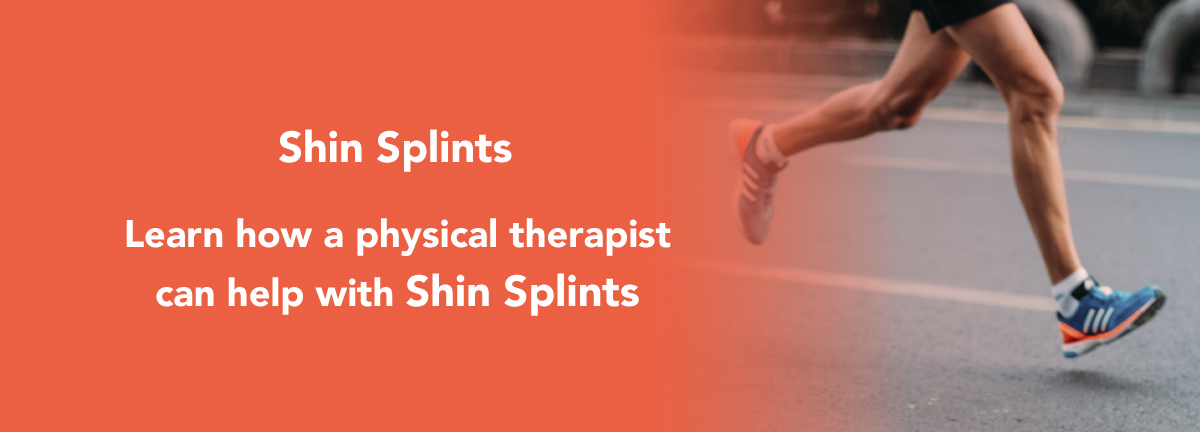Physical Therapist's Guide to Shin Splints
Medial tibial stress syndrome (MTSS) is a condition that causes pain on the inside of the shin (the front part of the leg between the knee and ankle). MTSS is commonly referred to as “shin splints” due to the location of pain over the shin bone; pain can be felt on the inside or the front of the shin bone. MTSS is one of the most common athletic injuries. It affects both the muscle on the inside of the shin and the bone to which it attaches, causing the connection between them to become irritated or even develop minor tears due to overwork. MTSS may affect up to 35% of athletes who run and jump, such as distance runners, sprinters, basketball or tennis players, or gymnasts. Military personnel, dancers, and other active people also can develop MTSS. Physical therapists help people who develop MTSS recover pain-free movement and learn exercises and tactics to prevent reinjury.
WHAT are Shin Splints?
Medial tibial stress syndrome (MTSS) develops when too much stress is placed on the tibia (main shin bone). The muscles that attach to the tibia can cause an overload of stress on the bone, and strain themselves at their insertion onto the bone as well. These muscles include the posterior tibialis muscle, the soleus muscle, and the flexor digitorum longus muscle.
The most common risk factors of MTSS include:
Flattening of the arch of the foot (overpronation) while standing and walking/running
Participation in a sport that requires repetitive jumping and/or running
Excessive hip motion (moving the hip through a greater range than is typical)
A high body mass index (>20.2 BMI)
A previous running injury
How does it feel?
If you have developed MTSS, you may feel pain in the middle or bottom third of the inside of the shin. The pain may be sharp when you touch the tender area, or occur as an ache during or after exercise. Generally, however, the pain is initially provoked with activity and lessens with rest. When MTSS is developing, the pain may be present during the beginning of exercise and less noticeable as exercise progresses. Over time, the condition can worsen and pain may be felt throughout any exercise regimen and continue after exercise.
How Is It Diagnosed?
Your physical therapist will perform a thorough examination that will include taking a full health history and observing you as you walk and perform the activity that causes your symptoms, such as running or jumping.
Your physical therapist will further perform a series of tests and measures of your musculoskeletal system that assess your strength, mobility, flexibility, and pain response. The most reliable symptom of MTSS is pain felt when pressure is applied to specific locations on the shin.
If the results of the examination suggest MTSS, your physical therapist will discuss with you the goals of treatment and develop a specialized rehabilitation program for you. If a more serious condition could be contributing to your pain, you may be referred to a physician for further tests.
How Can a Physical Therapist Help?
Your physical therapist will determine what risk factors have caused your MTSS and will teach you how to address those causes. A treatment plan will be developed that is specific to you and what your body needs to recover and to prevent reinjury.
To relieve pain, your physical therapist may prescribe:
- Rest from the aggravating activity or exercise
- Icing the tender area for 5 to 10 minutes, 1 to 3 times a day
- Exercises to gently stretch the muscles around the shin
- Taping the arch of the foot or the affected leg muscles
- Hands-on massage of the injured tissue
To help strengthen weak muscles, your physical therapist may teach you:
- Exercises that increase the strength of hip rotation, hip abduction (lifting the leg away from the other leg), and hip extension (lifting the leg behind your body) to decrease stress to the lower leg
- Exercises that increase your arch and shin muscle strength to decrease the overpronation (flattening out) of the arch of the foot
Your treatment also may include:
- Calf and foot muscle stretches
- Single-leg exercises including squats, reaching exercises, or heel raises
- Modified take-off and landing techniques for jumping athletes
- Modified leg and foot control during walking and running
- Suggestions for footwear that provides better support when walking or exercising
- Your physical therapist also may prescribe orthotics or shoe inserts that support the arch of the foot if your feet flatten out too much, or if your foot muscles are weak.
Physical therapists help athletes with MTSS alter their training schedules to safely return to sport, and offer specific guidance for reducing the possibility of reinjury.
Can this Injury or Condition be Prevented?
To prevent MTSS, physical therapists recommend that you:
- Get an annual functional fitness examination, including strength, flexibility, mobility, and sport-specific analyses.
- Perform dynamic stretches before exercising and static stretches after exercising.
- Perform strength and endurance exercises for the foot, hip, and pelvic muscles.
- Perform balance exercises on each leg.
- Follow a recommended training program when starting or increasing an exercise program. MTSS is commonly seen in the early part of a person’s training or the beginning of an athlete’s season. All exercise programs should begin gently and progress slowly.
- Choose appropriate footwear for the activity that is being performed.
- Choose appropriate cross-training activities to condition the core and leg muscles.
- Exercise on a softer, more pliable surface whenever possible.
- Your physical therapist can teach you exercises to ensure maximum strength and health, and prevent MTSS.
Article Source: Choose PT
|
SHIN SPLINTS
ALZHEIMER'S DISEASE
PELVIC PAIN
PAIN
HERNIATED DISC
ANKLE SPRAIN
WRIST TENDONITIS
HIP BURSITIS
PATELLOFEMORAL PAIN
NECK PAIN
PLANTAR FASCIITIS
HEADACHES & PHYSICAL THERAPY
GARDENING TIPS
|

